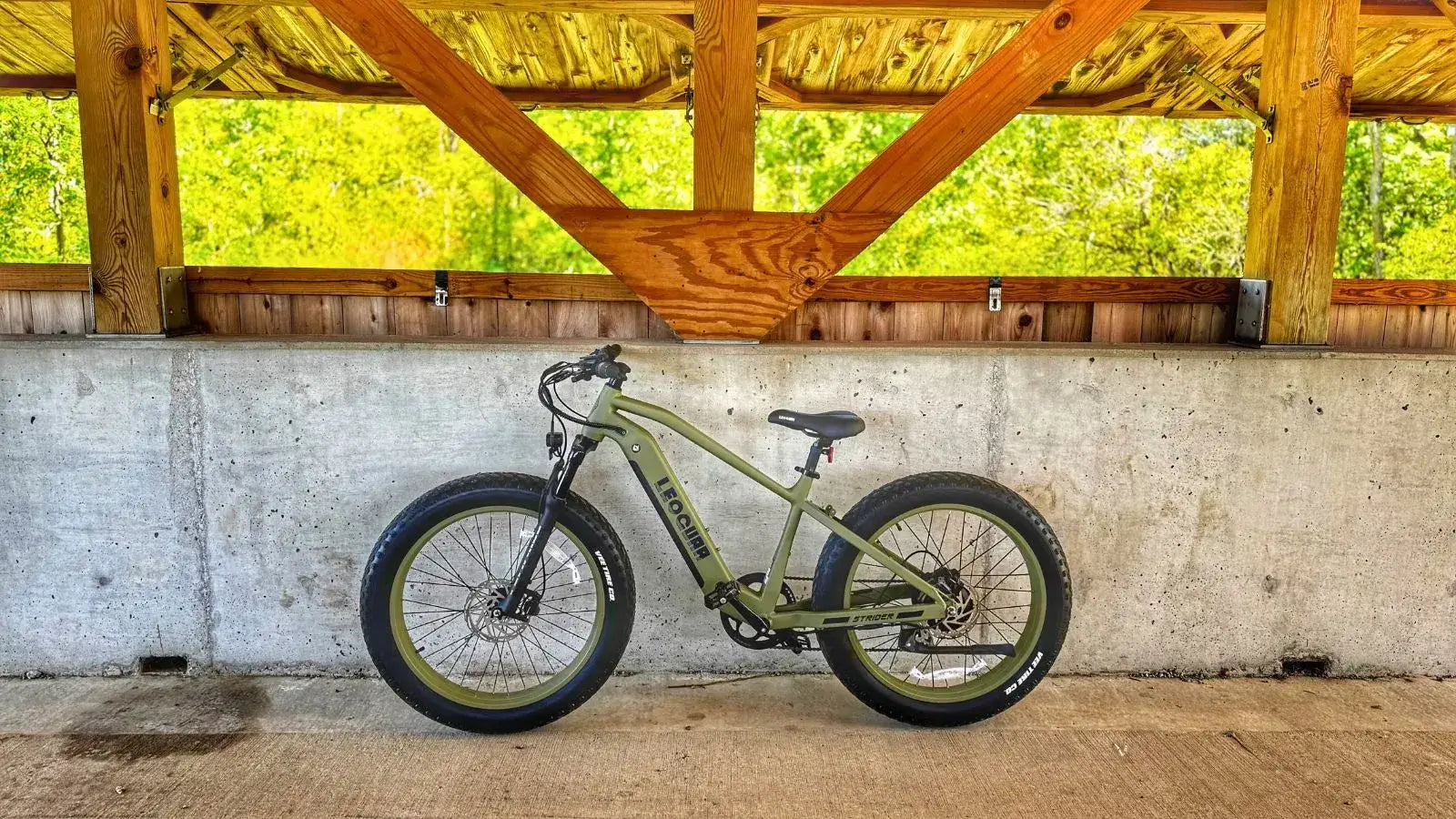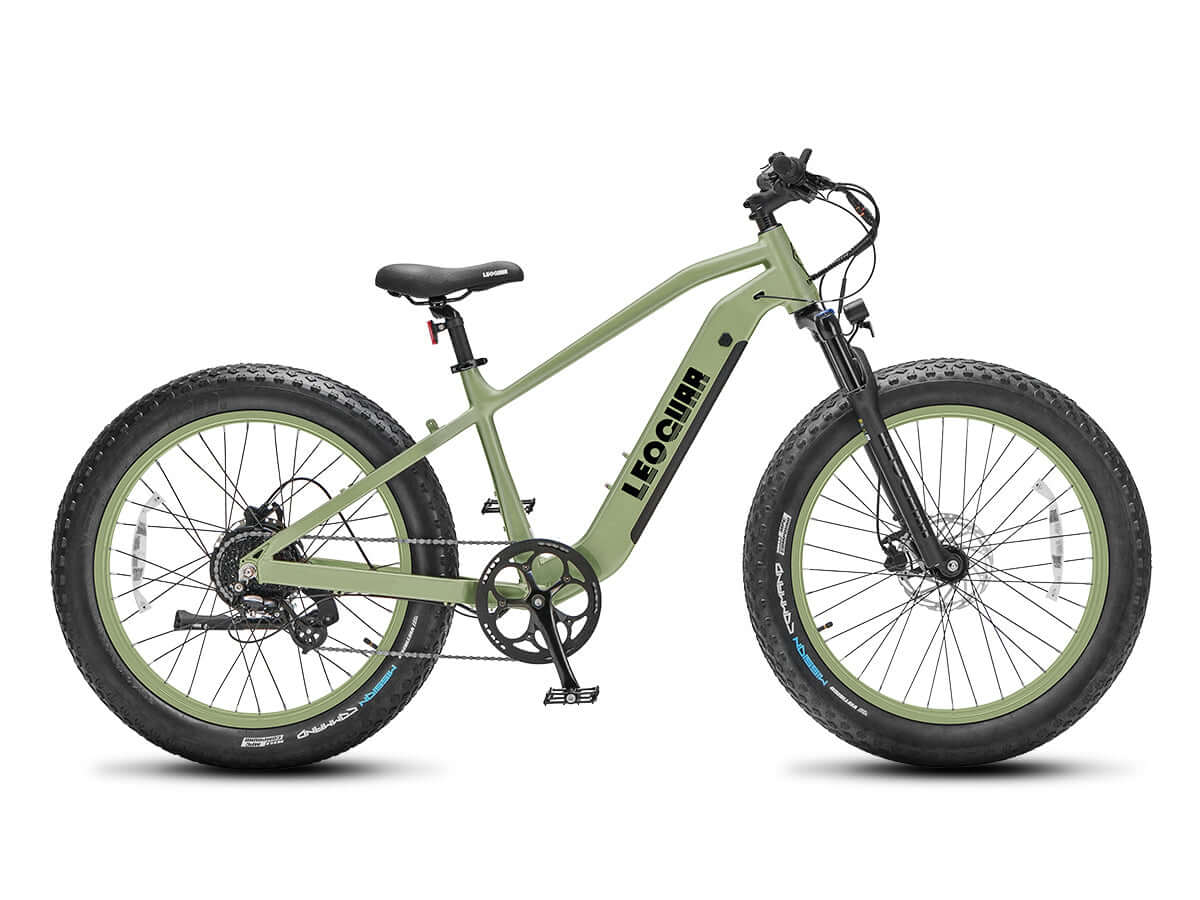
What to Expect from a Fat Tire Mountain Bike: Trail Stability, All-Terrain Grip
Quick Answer: A fat tire electric bike delivers enhanced trail stability, shock absorption, and traction across sand, snow, mud, and rocks. With 4.0-inch wide tires and rugged frames, these bikes offer a smooth, confident ride on unpredictable terrain.
A fat tire mountain bike gives you amazing stability and grip. It's basically the monster truck of the cycling world, allowing riders to tackle terrain that would be tough or impossible on a regular bike. The secret is in its wide, low-pressure tires, which create a huge footprint that rolls over obstacles instead of bouncing off them. This is what gives the bike its special ride feel.
When we talk about an e fat tire mountain bike, this experience gets even better. The motor takes away the main problems of weight and rolling resistance, adding powerful new accessibility and climbing ability. But there's more to explore than just "better grip." We'll look at not just what a fat bike does, but why it does it, how it feels on the trail, and the important trade-offs that come with its unique design.
Why Fat Tire Electric Bikes Stick to the Trail
To understand a fat tire mountain bike, we need to know about the tire contact patch. This is the small area where the tire touches the ground at any moment. Fat bikes take this idea to the extreme.
A fat bike tire measures 3.8 to over 5 inches wide and runs at very low air pressure—often between 5 and 15 PSI. A standard mountain bike tire is usually 2.2 to 2.6 inches wide and runs at much higher 20-35 PSI. This mix of width and low pressure creates a much larger and more flexible contact patch. According to the fundamental principles of tire pressure and performance, a larger contact patch means more grip.
Instead of bouncing off obstacles like roots and rocks, the soft tire bends and wraps around them. This is the secret to both its incredible traction and its natural suspension effect, smoothing out trail bumps.
- Fat Tire: Has a large, flexible contact patch, works at very low pressure, and wraps around trail obstacles.
- Standard Tire: Has a smaller, firmer contact patch, works at higher pressure, and tends to bounce off trail obstacles.
Unmatched Trail Stability with a Fat Tire Electric Bike
This unique grip creates a feeling of amazing stability on the trail. When riding a fat tire mountain bike, you feel "planted." The bike feels much less nervous or jumpy, especially on loose, unpredictable surfaces where a narrower tire might slide or wash out.
This stability boosts confidence a lot, especially for newer riders or anyone tackling a challenging trail section. We've all been there: looking at a tricky, slanted line covered with wet roots. On a standard bike, it's a section that needs precise line choice and some luck. On a fat bike, we've cleared that same section with surprising ease, feeling the tires bend to the roots and hold a line that would have sent us sliding before. The bike's natural stability kept us upright and moving forward.
This creates a "point-and-shoot" character. You can often aim the bike at a line, trust the tires to do their job, and simply pedal through it.
Fat Tire Electric Bike Performance on Real-World Terrain
While famous for sand and snow performance, the true value of a fat tire mountain bike shows across many common trail conditions. Here's how it works in the real world.
Loose Gravel and Scree Climbs
On steep, loose climbs, a standard tire often loses traction, spinning out and forcing you off the bike. A fat bike's huge contact patch spreads your weight and pedaling force over a larger area, stopping the rear wheel from digging in and losing grip. It gives tractor-like traction that lets you simply sit, spin, and climb your way up hills you'd otherwise walk.
Wet Roots and Rocks
This is where the tire's ability to bend really shines. Instead of sliding off the top of a slick root or rock, the soft, flexible rubber shapes itself to the surface. This creates surprising grip in conditions where narrower, harder tires would slide out right away. It doesn't break the laws of physics, but it greatly expands what's rideable in wet conditions.
Mud and Soft Soil
In moderate mud or soft, rich soil, a fat bike excels. The wide tires provide flotation, letting the bike ride over the soft ground rather than digging in and getting stuck. It keeps momentum where other bikes would sink and grind to a halt.
Sand and Snow
This is the classic use case and where a fat tire bike is the clear winner. The principle of flotation is everything here. By running extremely low pressures (sometimes as low as 4-5 PSI), the tire spreads out to maximize its surface area, letting it stay on top of soft surfaces like sand or snow. It's why these bikes have become essential for winter riding and beach exploration, as riders in forums have confirmed for years.
| Terrain | Fat Tire Mountain Bike Performance | Standard Mountain Bike Performance |
|---|---|---|
| Hardpack | Good | Excellent |
| Loose Gravel | Excellent | Fair |
| Mud | Excellent | Poor |
| Wet Rocks & Roots | Good | Fair |
| Sand | Excellent | Poor |
| Snow | Excellent | Poor |
The Electric Bike Advantage in Off-Road Adventures
The biggest downside to a traditional fat bike is its high rolling resistance and weight. Those massive tires need more effort to get up to speed and keep moving. However, an e fat tire mountain bike completely changes the experience by eliminating this disadvantage.
The electric motor provides the power needed to overcome the natural drag, making the bike feel surprisingly lively and easy to pedal. The combination of the motor's power and the tires' huge grip is where the magic truly happens. We've used this combination to power up incredibly steep, loose, and technical climbs that would be physically impossible on any non-assisted bike.
Imagine climbing a sandy dune or powering through a swampy field without losing momentum—that's the advantage of an e-fat bike. The motor provides consistent power, and the tires provide steady grip to use it. The only new thing to consider is managing the motor's torque. On very slippery surfaces, it's possible to spin the rear wheel, but modern e-fat bikes often use high-performance components like torque-sensing motors that deliver power smoothly, making this easy to control.

Understanding the Trade-Offs of a Fat Tire Electric Bike
No bike is perfect, and the fat tire's incredible strengths come with distinct trade-offs. Being aware of these handling quirks is key to understanding the bike's complete personality and avoiding surprises. A balanced look at the pros and cons of fat ebikes shows these are important considerations.
Slower Handling and Agility
The large, heavy wheels and tires create a strong spinning effect. This makes the bike incredibly stable at speed but also slower to start turns. It's less "playful" or "snappy" than a typical trail bike. It prefers to carve long, smooth arcs rather than snap through tight, successive corners.
Tire "Self-Steer"
This is a common thing unique to fat bikes. At certain pressures, especially on hard surfaces like pavement, the tires can develop a tendency to pull the steering to one side. It can feel like the bike has a mind of its own. This is a known quirk caused by the tire's shape and bending. It's not a defect and can almost always be managed or fixed by making small adjustments to your tire pressure.
Weight and Acceleration
On non-electric models, the bike's weight is a constant factor. Getting those heavy wheels spinning from a stop or speeding up out of a slow corner requires noticeably more physical effort compared to a standard mountain bike.
Finding the Perfect Pressure
Tire pressure is everything on a fat bike. It is not a "set and forget" thing. A change of just 1-2 PSI can completely change the ride feel, turning it from bouncy and uncontrolled to smooth and grippy. Riders must be willing to experiment with a low-pressure gauge to find the sweet spot for different conditions, which can change from ride to ride.
Is a Fat Tire Electric Bike Right for You?
So, is a fat tire mountain bike the right choice for you? It comes down to your priorities and local terrain. If you value absolute stability, confidence on loose or unpredictable surfaces, and all-season, all-condition capability above raw speed and nimble handling, this bike is an exceptional tool.
It's the perfect choice for riders in areas with sandy trails, frequent mud, or a dedicated snow season. For those considering an electric model, the e fat tire mountain bike is the ultimate traction machine, opening up new possibilities for exploration and climbing. It's a bike that builds confidence and encourages you to tackle the trail, no matter the conditions.
Frequently Asked Questions About Fat Tire Electric Bikes
1. What tire pressure should I use on my fat tire mountain bike?
Most fat bikes run between 5-15 PSI, much lower than regular mountain bikes. Start around 8-10 PSI and adjust based on your weight, terrain, and conditions. Softer surfaces like sand or snow need lower pressure (4-6 PSI), while harder trails can handle slightly higher pressure.
2. Can I ride a fat tire mountain bike on regular trails?
Yes, fat bikes work great on regular trails, especially loose, muddy, or technical terrain. They provide excellent stability and confidence, though they may feel slower and less agile than traditional mountain bikes on smooth, hard-packed trails.
3. How much heavier is a fat tire mountain bike compared to a regular mountain bike?
Fat bikes typically weigh 5-10 pounds more than standard mountain bikes due to their larger wheels, tires, and stronger frames. Electric fat bikes add another 15-20 pounds for the motor and battery system.
4. Do I need special wheels for a fat tire mountain bike?
Yes, fat bikes require specific wide rims (typically 80mm+ internal width) designed to support the large tires properly. Regular mountain bike wheels won't work with fat bike tires, and the frame and fork must also be designed to accommodate the wider wheels.
5. Are electric fat tire mountain bikes worth the extra cost?
If you plan to ride challenging terrain, long distances, or want to tackle steep climbs, an electric fat bike can be worth it. The motor eliminates the main drawbacks of weight and rolling resistance while maximizing the traction benefits, making previously impossible rides accessible.









































Leave a comment